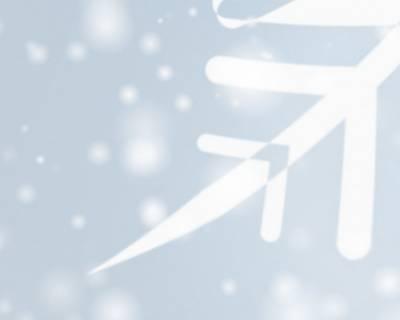| title | Ancient Medicinal Dosages |
| release time | 20250321 |
| source | Shen Yaozi organized |
| keyword | dosage |
The actual weight of units such as the jīn (斤) and liǎng (兩) in ancient China could vary depending on the dynasty, especially before the Tang dynasty.
Modern Weights of Han Dynasty Measures
1 dàn (石) = 4 jūn (鈞) = 29.760 kg1 jūn (鈞) = 30 jīn (斤) = 7440 gm
1 jīn (斤) = 16 liǎng (兩) = 248 gm = 250 ml of liquid(1)
1 liǎng = 24 zhū (銖) = 15.625 gm
1 zhū (銖) = 0.65 gm = the weight of 100 millet grains
1 fēn (分) = 3.9~4.2 gm
1 cuō (撮) = 2 gm
1 hú (斛) = 10 dǒu (斗) = 20000 ml
1 dǒu (斗) = 10 shēng (升) = 2000 ml
1 shēng (升) = 10 hé (合) = 200 ml
1 hé (合) = 2 yuè (龠) = 20 ml
1 yuè (龠) = 5 cuō (撮) = 10 ml
1 cuō (撮) = 4 guī (圭) = 2 ml
1 yǐn (引) = 10 zhàng (丈) = 2310 cm
1 zhàng (丈) = 10 chǐ (尺) = 231 cm
1 chǐ (尺) = 10 cùn (寸) = 23.1 cm
1 cùn (寸) = 10 fēn (分) = 2.31 cm
1 fēn (分) = 0.231 cm
1 fāngcùnbǐ (方寸匕) = 2.7 ml = 2.74 gm for minerals = about 2 gm for powdered medicine = about 1 gm for herbal powders(2)
1 qiánbǐ (錢匕) = 1.82 ml = 1.5~1.8 gm(3)
1 dāoguī (刀圭) = 0.15 gm(4)
bubble_chart Note
- According to the "Book of Han: Treatise on Rhythm and the Calendar," 24 zhū (銖) make one liǎng (兩), and 16 liǎng (兩) make one jīn (斤).
- According to the "Collection of Ancient Chinese Weights and Measures," 1 Han cùn is approximately 2.3 cm. The base area of a fāngcùnbǐ is about 5.3 cm2, and the volume of the cone-shaped medicine taken with this area is about 2.33/3 cm3. Depending on the density of the powder, the weight of the medicine taken is approximately 1~2 gm.
- Tao Hongjing: "A qiánbǐ is the amount of medicine that can be scooped up with a large coin. If it is said to be half a qian, then it is half of what can be scooped with one coin. The five-zhu coin is used." The "Introduction to Materia Medica" states: "A qiánbǐ (錢匕) is the amount of medicine that can be scooped with the edge of a five-zhu coin, ensuring that it does not fall off." Thus, a qiánbǐ is the maximum amount of medicine that can be scooped with a five-zhu coin used as a spoon. It is simply referred to as one bǐi."
- One dāoguī, according to Tao Hongjing, is one-tenth of a fāngcùnbǐ, equivalent to 0.15 gm. Tao also mentioned that one dāoguī is equivalent to the weight of two pills, making each pill weigh 0.075 gm.
Modern Weights of Tang and Later Dynasties' Measures
According to the "Chinese Materia Medica Dictionary: Appendix" (Shanghai Science and Technology Press, 1st edition, July 1979), the conversion standard for ancient and modern weights and measures is:
1 jīn (斤) = 16 liǎng (兩) = 596.8 gm
1 liǎng (兩) = 10 qián (錢) = 37.3 gm
1 qián (錢) = 10 fēn (分) = 3.73 gm
Taiwan's system of weights and measures, inherited from the Qing dynasty, defines 1 táijīn (台斤) = 16 liǎng (兩) = 600 gm, and 1 liǎng (兩) = 37.5 gm.
In 1959, mainland China standardized weights and measures, defining 1 shìjīn (市斤) as 500 gm, 1 shìjīn (市斤) = 10 liǎng (兩), and 1 liǎng (兩) = 50 gm.
Volume and Shape
One pellet = one egg yolk = 40 wutong seeds = 80 soybeans = 160 small beans = 480 hemp seeds = 1440 fine hemp seeds = 1280 millet
Wutong seed size = soybean size = 0.25 ml
Rabbit droppings size = 1.5 gm
Pellet size = 2~3 gm(1)
Hemp seed size = 0.1 gm
Small bean size = 0.07 ml
Soybean size = 0.22 ml
Millet size = 0.0025 ml
Jujube kernel size = 0.65 ml
Jujube size = 6 ml
Egg yolk size = 10.6 ml
Egg size = 40.56 ml
bubble_chart Note
- Danbo Yuanjian's "Discussion on Cold Damage: Phlegm and Knots": "Tao (in 'Bencao Jing Jizhu', Southern Liang, 490) said, one fāngcùnbǐ of powder mixed with honey makes a pill the size of a wutong seed, and ten such pills are considered a standard dose. A pellet or egg yolk size is equivalent to ten wutong seeds. The Tang commentary states that one fāngcùnbǐ of powder makes sixteen wutong-sized pills or one pellet-sized pill. An egg yolk size is equivalent to forty pills. Today, pellet size is the same as egg yolk size, which is quite different. According to this, one pellet is exactly equivalent to sixteen wutong seeds." Also, "Bencao Yanyi" (Kou Zongshi, Song dynasty, 1116) states: "Loquat seeds are as big as pellets."
Han Dynasty Volume and Weight
1 Han shēng = 200 ml
1 shēng of Banxia = 90 gm
1 shēng of Schisandra = 74 gm
1 shēng of Ophiopogon = 120 gm
1 shēng of Hemp seeds = 110 gm
1 shēng of Tinglizi = 130 gm
1 shēng of Mirabilite = 120 gm
1 shēng of Fermented soybeans = 100 gm
1 shēng of Evodia = 80 gm
1 shēng of Red beans = 158 gm
1 shēng of Rice = 176 gm (1)
Half shēng of Yuliren = 70 gm
Half shēng of Raw jujube seeds = 50 gm
Half shēng of Winter melon seeds = 25 gm(2)
1 shēng of Sichuan pepper = 50 gm
1 shēng of Tinglizi = 60 gm
1 shēng of Evodia = 50 gm
1 shēng of Schisandra = 50 gm
1 shēng of Banxia = 130 gm
1 shēng of Ground beetle = 70 gm
bubble_chart Note
- "A Study on the Conversion of Ancient and Modern Dosages in 'Treatise on Cold Damage'" by Qu Jingwen, Journal of Nanjing University of Traditional Chinese Medicine, March 1999, Vol. 15, No. 2
- "Measurement and Discussion of Special Dosages in Ancient Formulas" by Zhang Haoliang and Qu Rong, Zhejiang Journal of Traditional Chinese Medicine, 1987, 4, 177,
Medicinal Materials
One large piece of Aconite = 20~30 gmOne medium piece of Aconite = 15 gm
One small piece of Strong Aconite = 3 gm
One large piece of Strong Aconite = 5~6 gm
100 peach kernels = 30 gm
100 almonds (peeled and pointed) = 40 gm
10 large almonds = 4 gm
10 gardenia fruits ≈ 15 gm(1)
One average Trichosanthes fruit = 46 gm
One immature bitter orange ≈ 14.4 gm (also said to be medium size~18 gm)
One egg-sized piece of gypsum ≈ 40 gm
One chi of Magnolia bark ≈ 30 gm
One handful of bamboo leaves ≈ 12 gm
6 jujubes ≈ 1 Han liang(2)
One adult ground beetle ≈ 2.25 gm
100 leeches = 75 gm
bubble_chart Note













